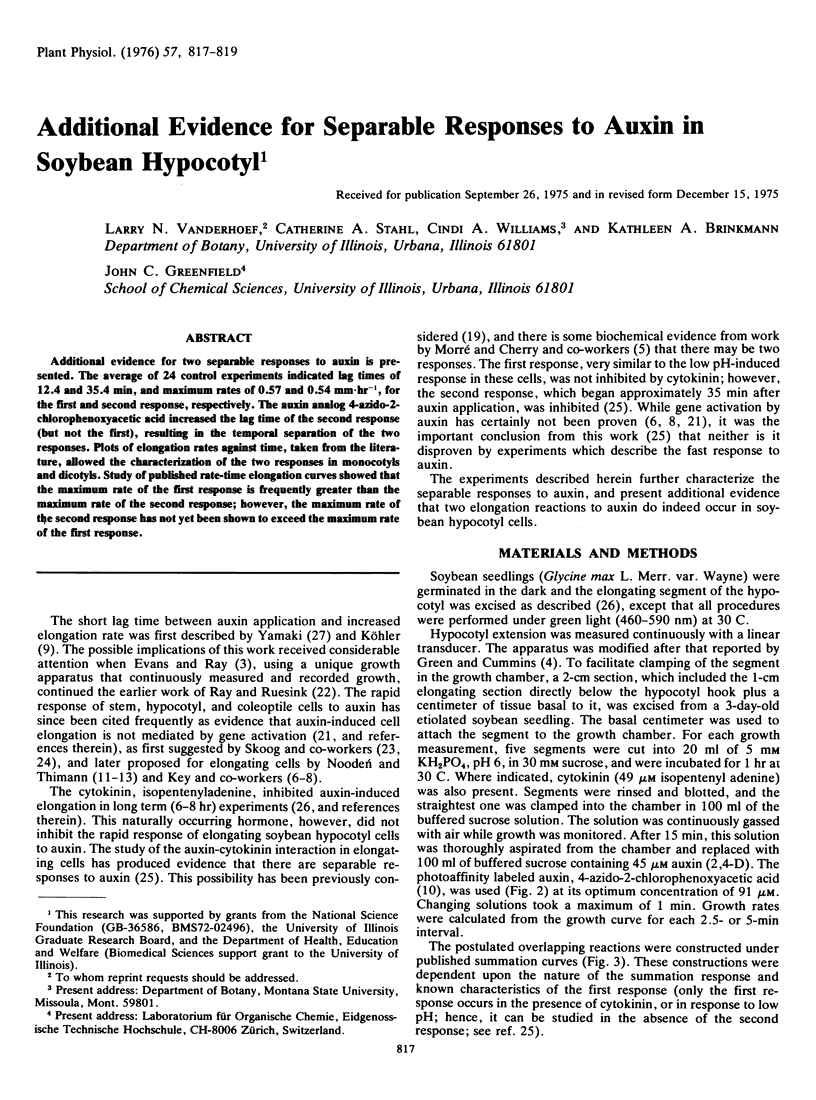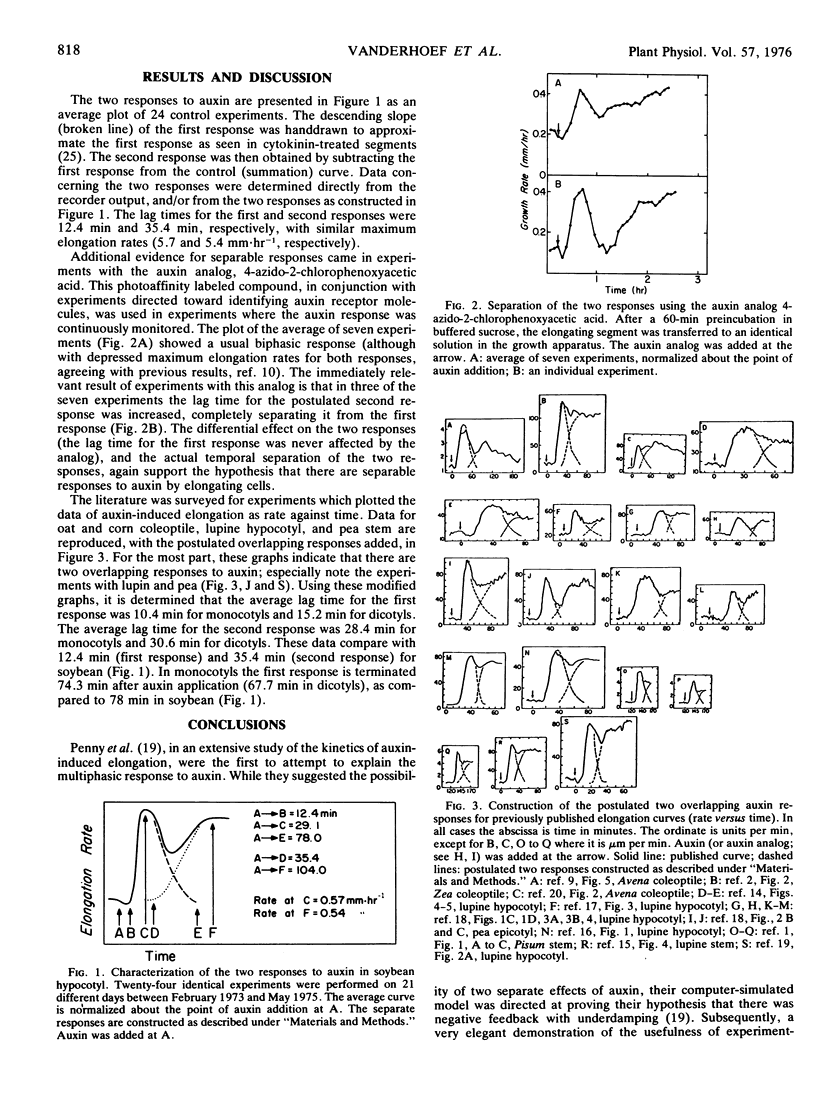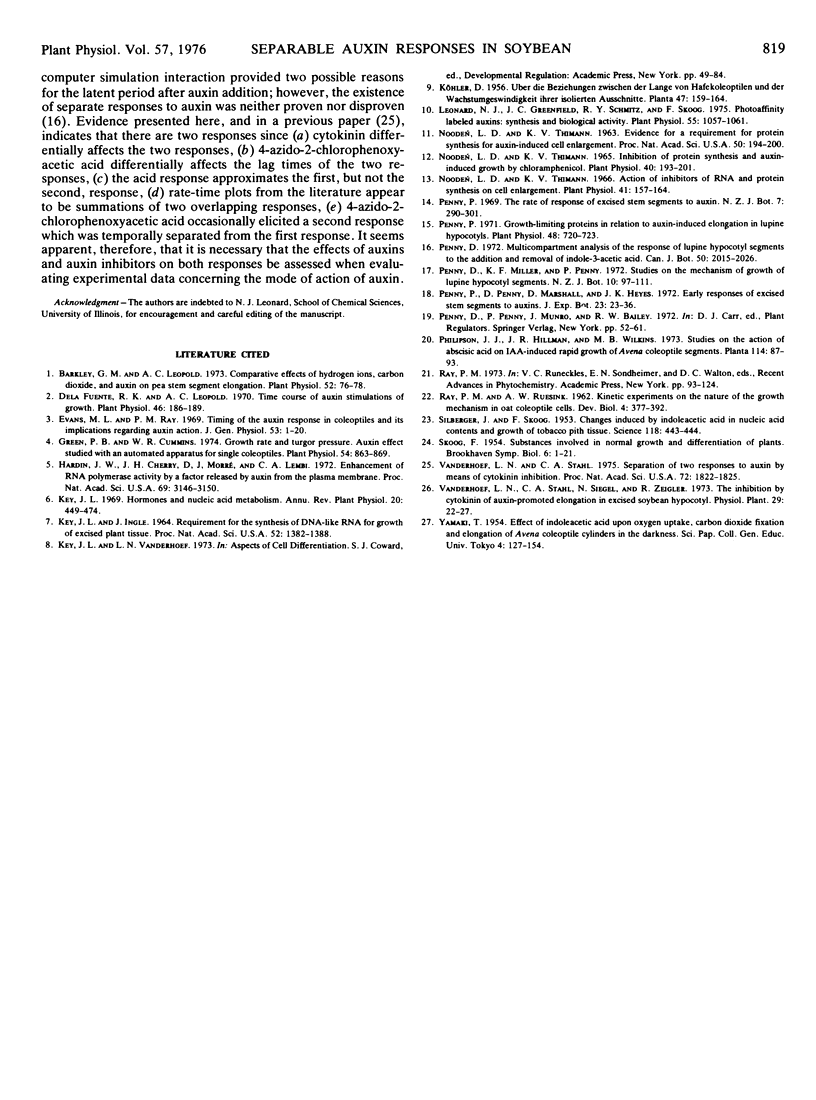Abstract
Additional evidence for two separable responses to auxin is presented. The average of 24 control experiments indicated lag times of 12.4 and 35.4 min, and maximum rates of 0.57 and 0.54 mm hr−1, for the first and second response, respectively. The auxin analog 4-azido-2-chlorophenoxyacetic acid increased the lag time of the second response (but not the first), resulting in the temporal separation of the two responses. Plots of elongation rates against time, taken from the literature, allowed the characterization of the two responses in monocotyls and dicotyls. Study of published rate-time elongation curves showed that the maximum rate of the first response is frequently greater than the maximum rate of the second response; however, the maximum rate of the second response has not yet been shown to exceed the maximum rate of the first response.
Full text
PDF


Selected References
These references are in PubMed. This may not be the complete list of references from this article.
- Barkley G. M., Leopold A. C. Comparative effects of hydrogen ions, carbon dioxide, and auxin on pea stem segment elongation. Plant Physiol. 1973 Jul;52(1):76–78. doi: 10.1104/pp.52.1.76. [DOI] [PMC free article] [PubMed] [Google Scholar]
- Dela Fuente R. K., Leopold A. C. Time course of auxin stimulations of growth. Plant Physiol. 1970 Aug;46(2):186–189. doi: 10.1104/pp.46.2.186. [DOI] [PMC free article] [PubMed] [Google Scholar]
- Evans M. L., Ray P. M. Timing of the auxin response in coleoptiles and its implications regarding auxin action. J Gen Physiol. 1969 Jan;53(1):1–20. doi: 10.1085/jgp.53.1.1. [DOI] [PMC free article] [PubMed] [Google Scholar]
- Green P. B., Cummins W. R. Growth rate and turgor pressure: auxin effect studies with an automated apparatus for single coleoptiles. Plant Physiol. 1974 Dec;54(6):863–869. doi: 10.1104/pp.54.6.863. [DOI] [PMC free article] [PubMed] [Google Scholar]
- Hardin J. W., Cherry J. H., Morré D. J., Lembi C. A. Enhancement of RNA polymerase activity by a factor released by auxin from plasma membrane. Proc Natl Acad Sci U S A. 1972 Nov;69(11):3146–3150. doi: 10.1073/pnas.69.11.3146. [DOI] [PMC free article] [PubMed] [Google Scholar]
- Key J. L., Ingle J. REQUIREMENT FOR THE SYNTHESIS OF DNA-LIKE RNA FOR GROWTH OF EXCISED PLANT TISSUE. Proc Natl Acad Sci U S A. 1964 Dec;52(6):1382–1388. doi: 10.1073/pnas.52.6.1382. [DOI] [PMC free article] [PubMed] [Google Scholar]
- Leonard N. J., Greenfield J. C. Photoaffinity-labeled Auxins: Synthesis and Biological Activity. Plant Physiol. 1975 Jun;55(6):1057–1061. doi: 10.1104/pp.55.6.1057. [DOI] [PMC free article] [PubMed] [Google Scholar]
- Noodén L. D., Thimann K. V. Action of inhibitors of RNA and protein synthesis on cell enlargement. Plant Physiol. 1966 Jan;41(1):157–164. doi: 10.1104/pp.41.1.157. [DOI] [PMC free article] [PubMed] [Google Scholar]
- Penny P. Growth-limiting Proteins in Relation to Auxin-induced Elongation in Lupin Hypocotyls. Plant Physiol. 1971 Dec;48(6):720–723. doi: 10.1104/pp.48.6.720. [DOI] [PMC free article] [PubMed] [Google Scholar]
- SILBERGER J., Jr, SKOOG F. Changes induced by indoleacetic acid in nucleic acid contents and growth of tobacco pith tissue. Science. 1953 Oct 16;118(3068):443–444. doi: 10.1126/science.118.3068.443. [DOI] [PubMed] [Google Scholar]
- Vanderhoef L. N., Stahl C. A. Separation of two responses to auxin by means of cytokinin inhibition. Proc Natl Acad Sci U S A. 1975 May;72(5):1822–1825. doi: 10.1073/pnas.72.5.1822. [DOI] [PMC free article] [PubMed] [Google Scholar]


